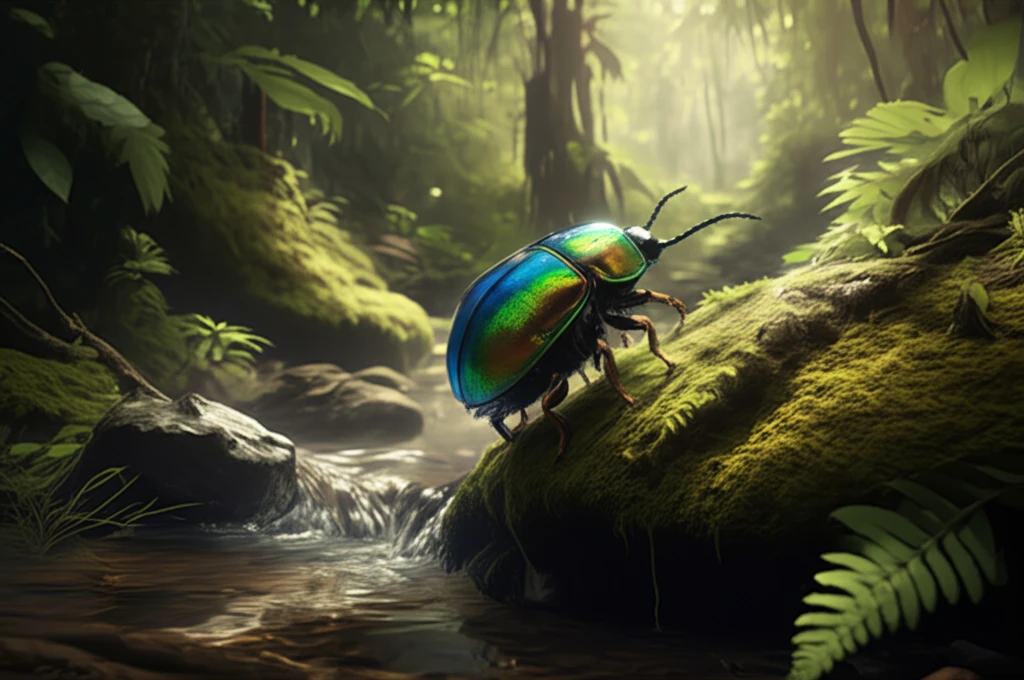
Hidden Wonders: Unveiling the Psephenops panamaensis – A New Aquatic Beetle Species!
"Dive into the discovery of Psephenops panamaensis, a unique riffle beetle found in the heart of Panama, and understand its importance in biodiversity and conservation."
In the realm of biodiversity, new discoveries are constantly reshaping our understanding of the natural world. Among these, the identification of a new species holds significant weight, offering fresh insights into evolution, ecology, and conservation. Recently, entomologists have added another jewel to Panama's already impressive natural crown: Psephenops panamaensis, a novel species of riffle beetle.
Riffle beetles, belonging to the family Psephenidae, are small aquatic insects typically found in fast-flowing streams and rivers. Their presence is often indicative of good water quality, making them valuable bioindicators. The genus Psephenops, to which P. panamaensis belongs, was previously known from a handful of species scattered across the Americas. This new discovery not only expands the known range of the genus but also marks the first record of the subfamily Psepheninae in Panama.
This article will explore the characteristics that set Psephenops panamaensis apart, its habitat, and its ecological significance. We’ll also discuss the broader implications of such discoveries for conservation efforts and the ongoing quest to document Earth’s incredible biodiversity.
What Makes Psephenops panamaensis Unique?

Psephenops panamaensis is a small beetle, measuring approximately 2 mm in length. Its body is oval-shaped and somewhat flattened, an adaptation to life in fast-flowing waters. The integument, or outer covering, is predominantly black, with the elytra (wing covers) displaying a slightly reddish hue. The entire body is covered in iridescent, reddish-yellow setae (bristles), giving it a shimmering appearance under the light.
- Size: Its relatively small size (under 2.4 mm) sets it apart from many other Psephenops species.
- Antennae: The antennae are long, reaching the posterior margin of the pronotum (the dorsal surface of the thorax). They are moniliform-serrate, meaning they resemble a string of beads with saw-like edges.
- Pronotum: The pronotum lacks tubercles (small bumps), which are present in some other species.
- Elytra: Unlike some related species, the elytra lack striae (longitudinal grooves).
- Protibiae: The protibiae (the distal part of the front legs) possess distinct denticles (small teeth).
- Tarsomeres: The ventral lobes of tarsomere 2 (a segment of the foot) are enlarged, extending distally and almost entirely covering tarsomeres 3 and 4.
- Parameres: The parameres (part of the male genitalia) are truncate, or squared off, at the tip.
Why This Discovery Matters
The discovery of Psephenops panamaensis underscores the importance of continued biodiversity research and conservation efforts. Panama, with its diverse ecosystems, remains a hotspot for undiscovered species. Documenting this biodiversity is crucial for understanding ecological relationships, monitoring environmental changes, and implementing effective conservation strategies. By understanding what species exist, where they live, and what their roles are in the ecosystem, we can better protect these invaluable natural resources for future generations.
